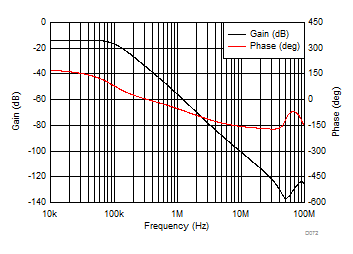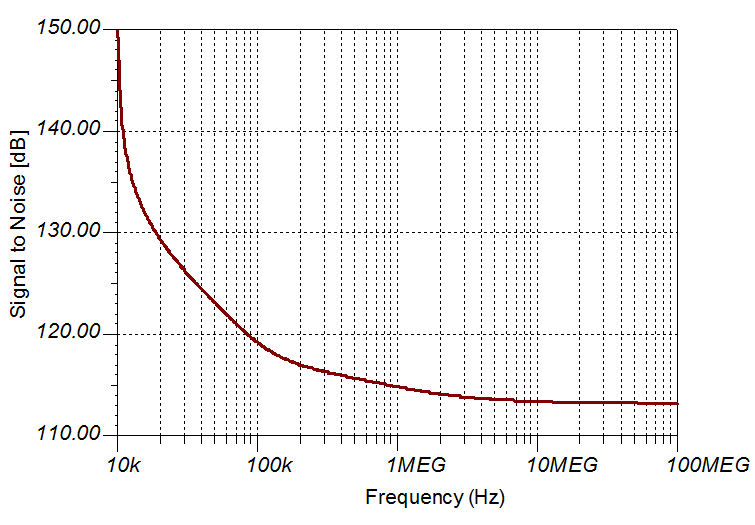JAJSL64D April 2016 – June 2021 THS4551
PRODUCTION DATA
- 1 特長
- 2 アプリケーション
- 3 概要
- 4 Revision History
- 5 Companion Devices
- 6 Pin Configuration and Functions
-
7 Specifications
- 7.1 Absolute Maximum Ratings
- 7.2 ESD Ratings
- 7.3 Recommended Operating Conditions
- 7.4 Thermal Information
- 7.5 Electrical Characteristics: (VS+) – (VS–) = 5 V
- 7.6 Electrical Characteristics: (VS+) – (VS–) = 3 V
- 7.7 Typical Characteristics: (VS+) – (VS–) = 5 V
- 7.8 Typical Characteristics: (VS+) – (VS–) = 3 V
- 7.9 Typical Characteristics: 3-V to 5-V Supply Range
-
8 Parameter Measurement Information
- 8.1 Example Characterization Circuits
- 8.2 Output Interface Circuit for DC-Coupled Differential Testing
- 8.3 Output Common-Mode Measurements
- 8.4 Differential Amplifier Noise Measurements
- 8.5 Balanced Split-Supply Versus Single-Supply Characterization
- 8.6 Simulated Characterization Curves
- 8.7 Terminology and Application Assumptions
- 9 Detailed Description
- 10Application and Implementation
- 11Power Supply Recommendations
- 12Layout
- 13Device and Documentation Support
- 14Mechanical, Packaging, and Orderable Information
パッケージ・オプション
メカニカル・データ(パッケージ|ピン)
サーマルパッド・メカニカル・データ
発注情報
10.2.1.3 Application Curves
Probing the response to the output pins by using the THS4551 SBOC471 TINA-TI™ simulation model (before the RC filter to the SAR ADC) illustrates the expected response plus some peaking at higher frequencies. Any signal or noise peaking that appears at the output because of this peaking is rolled off by the RC filter between the FDA and SAR inputs. A place for a differential input capacitor is illustrated in Figure 10-11 (as 0.1 pF) but is not used for this simulation. This slight peaking is a combination of low phase margin and feedthrough via the feedback capacitor to the increasing open-loop output impedance of Figure 9-3. The loop gain and phase response are available as a TINA-TI™ simulation file.
Obtaining the SNR to the ADC input pins, and assuming an 8-VPP full scale (2.83 VRMS), gives the result of Figure 10-13. The 113-dB SNR shown in Figure 10-13 does not limit the performance for any SAR application.
 Figure 10-12 Gain and Phase Plot for a 100-kHz Butterworth Filter
Figure 10-12 Gain and Phase Plot for a 100-kHz Butterworth Filter Figure 10-13 Signal-to-Noise Ratio
Plot
Figure 10-13 Signal-to-Noise Ratio
Plot